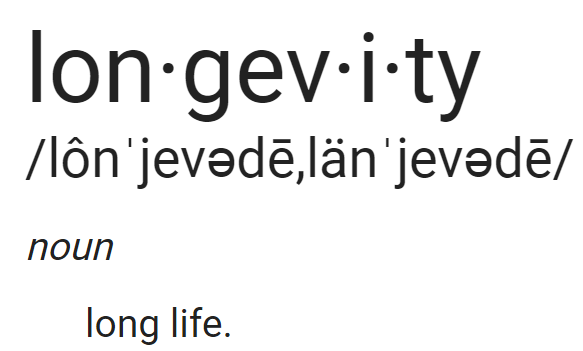|
In Part I of The Unexpected Downside of Longevity, we alluded to a study by Harvard that showed that between 1992 and 2008, life expectancy for people aged 65 increased from 17.5 years to 18.8 years. This means that the average American can now expect to live much longer than their parents due to the wonders of modern medicine. We outlined three unexpected side effects that this increased longevity created:
The bottom line is not only will junior be waiting longer to inherit assets, but he or she is likely inheriting much less. Exhausting one's assets in retirement is a growing concern for many in America. In Part II, we will look at ways to sustain your savings and income for your lifetime and for future generations. Let's start first with a few ideas to sustain your savings and income over your increased lifespan: First, as mentioned in Part I, long-term care (LTC) is something 70% of the population will need going forward but is a cost that only 30% of the population insures against. It is costly to be in a skilled nursing facility with costs running upwards of $100,000 per year in many parts of the country. With an average stay is skilled nursing home stay of 835 days, according to LifeHappens.org, this cost can quickly destroy a nest egg. The simple solution to this is to purchase long-term care insurance but many do not because it is costly and it is a "use it or lose it" cost and rightly or wrongly many do not like to purchase insurance they may never use. The solution is permanent life insurance with a living benefit rider. This is life insurance that builds cash value that can be used for future medical costs or even lifestyle needs in retirement. If it is not used for medical or lifestyle, it will become a benefit for ones heirs. It is cost effective and most people need some form of life insurance anyways! Second, is a suggestion that might seem obvious but is ignored by much of the population and that is to work longer and wait on retirement. Did you know the average retirement age for Americans is 63? This means the average person cannot even wait till 65 or the current full retirement age for most Americans for full social security of 67 years. Just continuing to work to age 70 will do two things: 1) it will allow you to save longer and delay drawing on accumulated assets, and 2) it will allow you to delay taking social security. Most people don't know that for each year you delay taking social security, it adds 8% to your benefit. That is a great investment return with no or limited downside! Third, if you have an existing annuity and enough assets for retirement, consider converting part or all of that annuity in a tax free exchange to annuity with a continuation of benefits rider. In many cases you will get a magnified LTC benefit AND in certain policies will get to pay those future LTC costs with annuity funds that come out tax free. This works well for those with very low or zero cost basis annuities. Next, here are a few ideas to on how to get the younger generation some of their inheritance earlier, while they can still enjoy it. Obviously, this only applies to those families who have plenty for their retirement and financial needs.
First, is an absolute "no-brainer" for affluent families. However, I see very few affluent families fully utilizing this option. The tax law currently allows an individual to gift $14,000 without gift tax to as many persons as he or she would like per year. This means a couple can gift up to $28,000 per year to as many heirs as they would like annually. Over a series of years, this can be a pretty big deal to those heirs. The best news here is this idea is something you can do right now and is not dependent on whether Congress or the President simplify the tax code (and potentially the estate tax regulations) or not. It still makes sense! Second, the tax law allows you to pay for educational costs and medical costs for an heir if paid directly to the provider and this is on top of the $14,000 per annum per person. The good news is that payments for medical insurance also qualify for this exclusion. Except in rare circumstances, you cannot deduct the medical expenses you pay for another person, and they cannot deduct the expenses either, since they did not pay the expenses. Thus, careful consideration should be given regarding whether you make the gift directly to the individual, subject to the $14,000 annual limit – which would allow the recipient of your generosity to pay the medical expenses and claim the medical deduction on his or her tax return – or whether you pay the medical expenses directly. Educational payments can be for any level of schooling including elementary, secondary and post-secondary. Unfortunately, the cost of room and board aren't eligible as direct payments, nor are contributions to qualified tuition programs (such as Section 529 plans). When you pay the qualified post-secondary education tuition for another individual, it does not mean – as is usually the case for medical expenses – that someone cannot benefit tax wise. Tax law says that whoever claims the exemption for the student is entitled to the American Opportunity Credit or Lifetime Learning Credit for higher education expenses if they otherwise qualify. The Take Away You are going to be impacted by this trend of increasing longevity. Living longer is great, but it will likely lead to many more Americas who flat out run out of resources in retirement. A great way to overcome this hurdle is to make sure you are prepared by making sure they are taking advantage of all available saving options, such as maximizing contributions to a 401(k) or some other retirement plan. Additionally, that you have some form of LTC insurance as you approach your 60s. Probably most importantly you need a financial plan to navigate all those years in retirement. This is someplace where we can help you, click here to find out more.
0 Comments
Your comment will be posted after it is approved.
Leave a Reply. |



